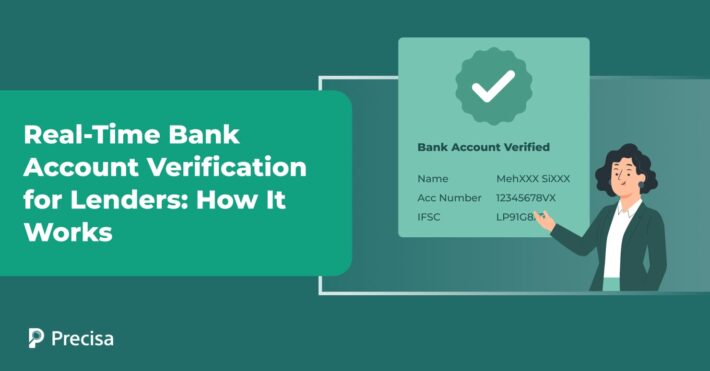A New Era for Fintech: Embedded Finance

It wasn’t long ago when Google Pay, Paytm, or UPI came into our lives and revolutionised the financial services sector and our purchasing habits. It feels incredible to effortlessly purchase goods, pay for expenses, book tickets, all in one go with just one tap/click. This seamless integration of financial services into a traditionally non-financial platform is embedded finance (EF).
Embedded finance is a facility that works on platforms enabled by fintech. The Covid-19-imposed-lockdown shifted the economic paradigm. With this, the consumers are now in a loop of interacting with mobile phones to make any transaction possible. It has been estimated that owing to the rise of non-bank technology services, embedded finance will become a $7 trillion opportunity globally by 2030.
Embedded finance is ushering in a new era for fintech. This article will see the hows and whats of this change…
Financial Services Made Easier
Let us delve deep into how embedded finance works.
In the 21st century, making customers happy is the paramount priority for businesses worldwide. For a fact, customers trust UPIs more than banks and find it convenient to use UPI rather than making a payment through cash.
For instance, with BaaS (Bank-as-a-service), embedded finance enables a company or retailer to consolidate banking options in their website or mobile application. In addition, customers no longer have to add their card details while purchasing, further easing the transaction process. All thanks to APIs (Application Programming Interface), even non-financial organisations can now embed banking products into their platforms.
Types of Embedded Finance
The scope of embedded finance goes beyond the payment space and encapsulates the lending space and other financial services into its scope.
As people become tech-savvy, integrating technology to make business transactions easier is of great importance.
These are the types of embedded finances:
- Embedded payments: With embedded payments, users can make payments with one click. They can use embedded payments on popular platforms like MakeMyTrip, Zomato, Amazon, Flipkart, etc.
- Embedded card payments: You can transfer funds electronically onto the embedded card and start purchasing with this option. Embedded card payments come in the form of smart or virtual cards.
- Embedded lending: Time to say goodbye to excessive paperwork and the tiresome process to get personal loans. You can now avail loan at the time of purchase on the same app. Via Point of Sale (PoS) terminals or Buy Now Pay Later platforms (BNPL) have become more convenient for using credit solutions.
- Embedded investments: You can opt for embedded investments if you manage assets efficiently. Through this, you can invest in the stock market mutual funds and also, at the same time, manage money in one common platform.
- Embedded insurance: Embedded finance in this field allows insurance companies to get in touch with the customers with lucrative insurance deals when they need it in their buying journey, like during checkout.
- Embedded banking: All banking services offered by non-financial institutions are known as embedded banking. You can make investments, manage transactions, deposit or lend money, apply for loans, use smart cards together from a single platform in this system.
Embedded Finance: a Leap of Faith for Businesses and Customers
As eCommerce becomes a trend, so will the concept of embedded finance. Nevertheless, any type of business with an online presence can incorporate embedded finance to ensure customer retention and improve customer experience.
As a result, companies are tapping into this service and redefining their business model from conglomerates like Amazon and Google to many HR tech platforms.
As consumer habits change, we can expect more businesses to launch embedded financial services. More and more customers choose comfort over anything else, which increases the growth potential of embedded financial services. It is better late than never for businesses to take this opportunity and create a win-win situation.
There are a myriad of benefits that come along the way with EF. Most obviously, financial services will be easily accessible to the customers and serve them better with digital platforms.
Banks aren’t left out, too, because they can partner with tech institutions and leverage their customer data using EF. This will further enable banks to facilitate change.
Beneficiaries and key players of embedded finance include consumers, government, enablers, digital platforms, tech-driven finance companies, and financial institutions.
A simple breakdown is given below:
Consumers- As consumers, they will have increased access to financial services and enhanced customer experience. In addition, you don’t have to deal with third-party entities whilst making any payment.
Government- Government aims for a cashless India, and what would be the perfect step if not embedded finance?
Digital platforms- These are non-Fintech companies with an application or website. They can launch their financial services to stand out from the competitors.
Tech-driven finance companies – Develop APIs and bridge the gap between financial institutions and digital platforms.
Financial institutions- These include banks, small finance banks, or NBFCs. They provide financial services and manage all financial requests from the embedded finance system.
Behind the scenes of embedded finance are players who have to coordinate and integrate to make everything possible. Embedded finance is evolving the Indian market, and as we purchase more, we are getting used to the concept of UPIs.
Not only customers but SMEs too are enjoying the benefits of embedded finance. According to the National Payments Corporation of India, there were around 3.65 billion transactions worth Rs. 6,54,351 crore in September 2021.
A Long Way to Go
Embedded Finance is increasingly driving a change in financial lives from businesses to customers. As a result, businesses must leverage embedded finance to stay alive in the competitive market.
Technology has the power to shift things drastically and to survive; businesses must be innovative, robust, and adaptable to change. Undoubtedly, embedded finance has a long way to go, and that is the path we strive to tread here at Precisa—where your finances will be at your fingertips.
Our bank statement analysis tool can reduce the processing time by five times. It doesn’t matter if you’re a fintech, NBFIs or any certified lender, using Precisa’s agile bank statement analyser, you scale your product (loan) at its origin (determining creditworthiness) for the best end-user experience. Contact us today.




